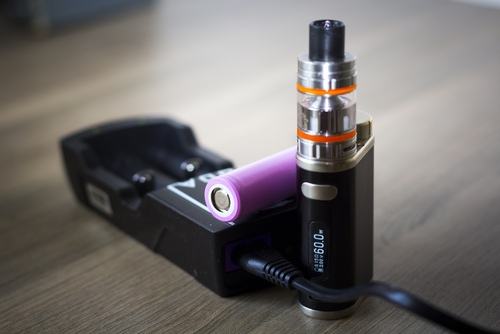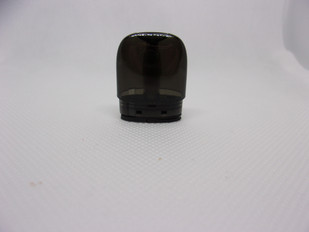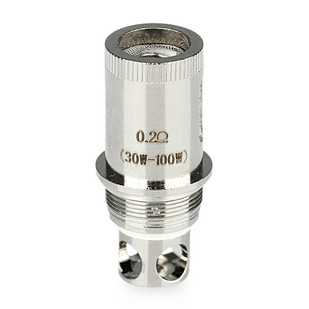- Home
- The Vape Mall Blog
- How Much Does Battery Capacity Impact Your Vapes in 2024?
How Much Does Battery Capacity Impact Your Vapes in 2024?
Posted by on
 For any vaper out there, who is looking at a certain
vaping device, one of the key things you look for is battery capacity. Why?
Well, simply put, the capacity of a battery is an important indicator of
its performance, as it determines how long a device (mod, pod system,
or disposable vape) can operate before needing a recharge.
However, the actual runtime can also depend on other factors like the
efficiency of the device using the battery and the conditions under which the
battery is used. This and more is what
we’re gonna discuss here today.
For any vaper out there, who is looking at a certain
vaping device, one of the key things you look for is battery capacity. Why?
Well, simply put, the capacity of a battery is an important indicator of
its performance, as it determines how long a device (mod, pod system,
or disposable vape) can operate before needing a recharge.
However, the actual runtime can also depend on other factors like the
efficiency of the device using the battery and the conditions under which the
battery is used. This and more is what
we’re gonna discuss here today.
A Quick Refresher on Battery Capacity
The concept of battery capacity wasn't exactly "discovered" by a single individual, but rather developed through the evolution of battery technology. The capacity of a battery, which is a measure of the amount of electrical energy it can store, became an important aspect as batteries evolved.
The history of batteries begins with Alessandro Volta, who created the first true battery in 1800. This device, known as the Voltaic Pile, was the first to provide a continuous, stable electrical current, and laid the groundwork for understanding electrical storage and capacity.
However, the specific concept of measuring and quantifying battery capacity developed gradually as battery technology improved. Scientists and engineers such as Michael Faraday, George Leclanché, and Thomas Edison contributed significantly to battery technology, leading to improved understanding of how batteries store and discharge energy.
Battery capacity is a measure of the amount of electric charge a battery can store. It is typically expressed in ampere-hours (Ah) or milliampere-hours (mAh), and sometimes in watt-hours (Wh) for larger batteries. This measurement indicates how much current a battery can supply for a certain period of time before it needs to be recharged. To better break these down for you:
- Ampere-Hours (Ah): This unit represents the amount of steady current a battery can supply for one hour before its voltage falls below a usable level. For example, a battery with a capacity of 2 Ah can deliver a current of 2 amperes for one hour, 1 ampere for two hours, and so on.
- Milliampere-Hours (mAh): This is commonly used for smaller batteries, like those in smartphones and laptops. One mAh is equal to one-thousandth of an ampere-hour. Example: A battery rated at 3000 mAh can deliver a current of 3000 milliamperes (or 3 amperes) for one hour.
- Watt-Hours (Wh): This unit is used for larger batteries, like those in electric vehicles and power storage systems. It is a measure of the total energy a battery can deliver. It's calculated by multiplying the voltage (in volts) by the capacity in ampere-hours.
What is the Impact of Battery Capacity?
The battery capacity in a vape device significantly impacts its performance in several ways, while still being balanced out with other variables like device size, cost, and the specific needs of the user.
1.Battery Life: Battery Life: The most direct impact is on battery life. A higher-capacity battery will generally last longer between charges, meaning more usage time and less frequent charging. This is particularly important for heavy users or those who are often away from a power source..
2.Power Output: Higher-capacity batteries can often support increased power outputs, which’s crucial for sub-ohm vaping that requires more power to heat the coils quickly. This impacts the amount of vapor produced and the overall vaping experience.
3.Size and Portability: Larger capacity batteries generally mean larger devices. For those seeking portability, a trade-off between battery life and device size must be considered.
4.Longevity: Device Longevity: In the long term, a larger battery capacity can potentially contribute to the overall longevity of the device. Batteries with a higher capacity may endure fewer charge cycles over time compared to smaller batteries, possibly extending the lifespan of the device..
5.Consistency of Performance: Higher capacity batteries can provide more consistent power output, ensuring the vape device performs optimally throughout the battery's charge.
6.Cost: Typically, higher capacity batteries are more expensive, impacting the overall cost of the vape device.
7.Safety: High-quality batteries with larger capacities are generally safer as they are less prone to issues like overheating or voltage drops. However, this depends on the quality of the manufacturing and the type of battery used.
Getting to Know the Battery Capacity in Box Mods, Pod Systems, and Disposable Vapes
Now that you have a better understanding of battery capacity in terms of what it is and its overall impact, it’s time to breakdown battery capacities in a few different devices.
Battery Capacities in Box Mods
Box mods, which are a type of electronic cigarette device, typically have battery capacities ranging from 1500mAh to 3000mAh. Some factors that influence the capacity include the size of the mod, whether it uses internal or external batteries, and the overall design and efficiency of the device. Larger box mods often accommodate higher capacity batteries or multiple batteries, which can extend the usage time before needing a recharge.
For example:
- -Smaller, single-battery box mods often use batteries in the range of 1500mAh to 2500mAh.
- -Larger box mods, especially those designed for high power output, might use dual batteries, each with capacities around 2500mAh to 3000mAh. This setup can provide a total capacity of 5000mAh to 6000mAh.
- -Some high-end or specialized box mods might have even larger battery capacities, especially if they are designed for extended use or very high power output.
Note: The battery life of a box mod also depends on the power settings used and the frequency of vaping. Higher power settings and more frequent use will drain the battery faster. Additionally, the type of battery (like lithium-ion) and the quality of the build also play significant roles in performance and safety. Plus, there are internal and externals batteries in mods.
Battery Capacities in Pod Systems
Pod systems typically have battery capacities that range widely depending on the model and brand. However, most pod systems have batteries with capacities in the following ranges:
1.Small Pod Systems: These are usually compact and designed for ease of use and portability. Their battery capacities generally range from around 200 to 400 milliampere-hours (mAh). These are suitable for occasional or light users.
2.Medium Pod Systems: These devices offer a balance between size and battery life. Their battery capacities are usually in the range of 400 to 800 mAh. This makes them suitable for regular users who don't want to charge the device multiple times a day.
3.Large Pod Systems: These are designed for heavy users and can have battery capacities exceeding 800 mAh, sometimes reaching up to 1500 mAh or more. These devices are larger and less portable but offer extended use time between charges.
Note: A higher mAh rating doesn't always directly translate to a significantly longer use time. The actual battery life you get from a pod system can vary based on factors like the power output of the device/power draw, your vaping habits ((like the frequency of use and the length of each puff), and of course, the efficiency of the pod system. Additionally, advancements in battery technology and vaping devices might lead to changes in these typical ranges over time.
Battery Capacities in Disposable Vapes
The battery capacities in disposable vapes can vary depending on the brand and model. Generally, disposable vapes are designed to be small, convenient, and for single-use, which means they often have smaller batteries compared to rechargeable vaping devices. The typical battery capacity for disposable vapes ranges from about 240mAh to 400mAh. Some factors that influence the battery size include the overall size of the vape, its intended usage duration, and the power requirements of the heating element.
- Lower Capacity (around 240mAh - 280mAh): These are commonly found in smaller, more compact disposable vapes. They are designed for short-term use and are often equivalent to a pack or two of traditional cigarettes.
- Medium Capacity (around 300mAh - 400mAh): This range is typical for many standard disposable vapes. These batteries can support a moderate amount of usage, often equating to several days for an average user.
- Higher Capacity (500mAh - 650mAh): Larger disposable vapes, which are intended for extended use or provide higher vapor production, typically have batteries in this range. These can last for a more extended period, often several weeks for an average user, before they are depleted.
Note: These are approximate values, and actual battery life can vary based on usage patterns, the type of e-liquid used, and the efficiency of the device's heating element. Additionally, since disposable vapes are not rechargeable, once the battery depletes, the entire device is meant to be disposed of.
Final Battery Capacity Thoughts
It's essential to choose a battery capacity that suits your vaping style and device. Be sure to use high-quality, reputable batteries, follow manufacturer recommendations, and handle your batteries with care to ensure safe and enjoyable vaping experiences. Plus, always use the appropriate charger for your batteries and for mods and pod system batteries, store them in a safe and dry place, in order to maintain their performance and safety.
 Loading... Please wait...
Loading... Please wait...



















